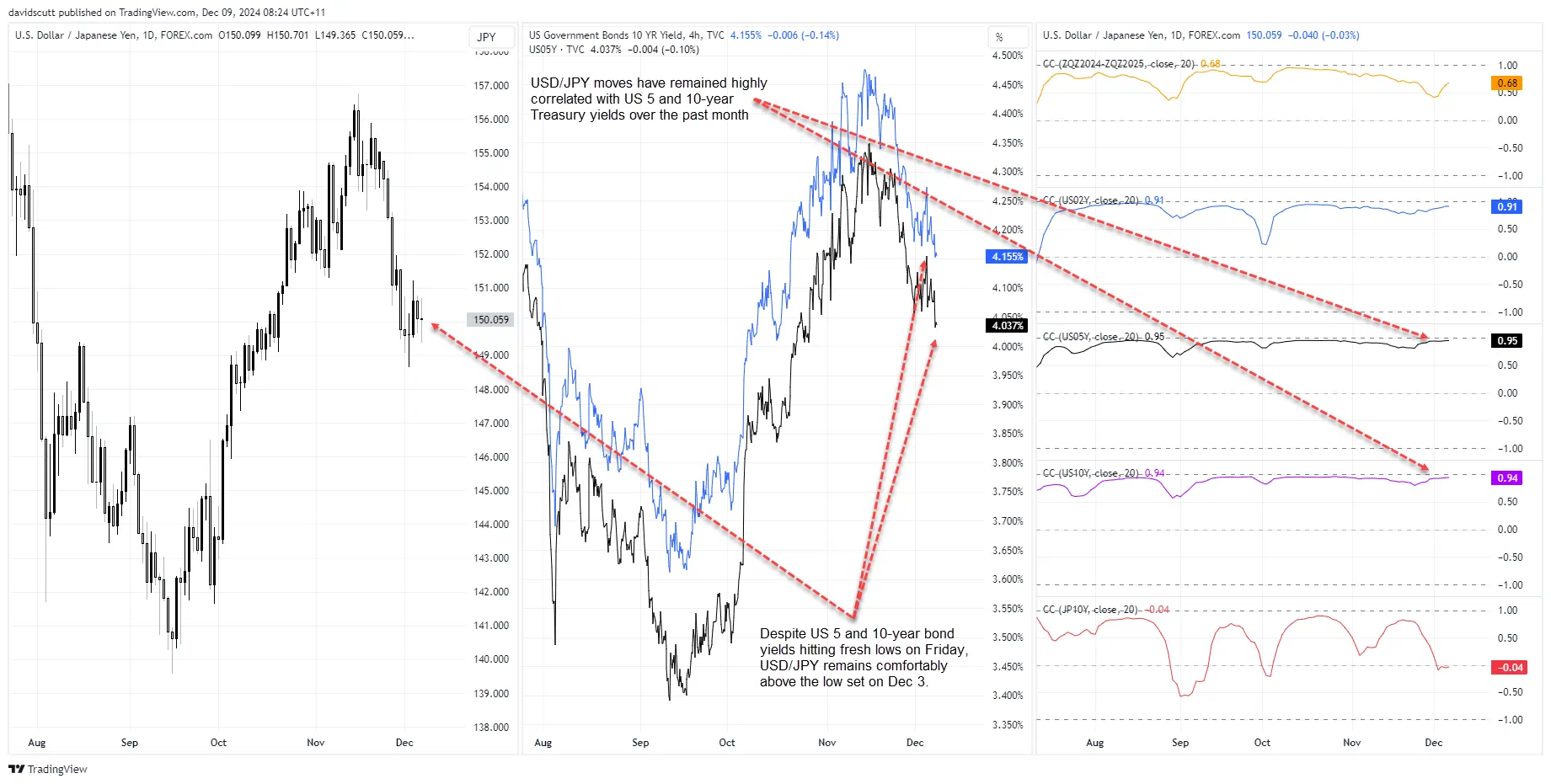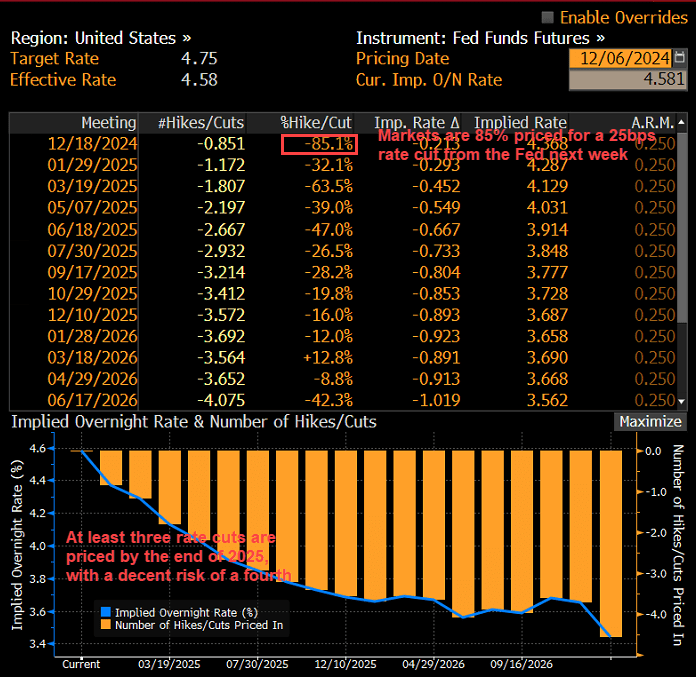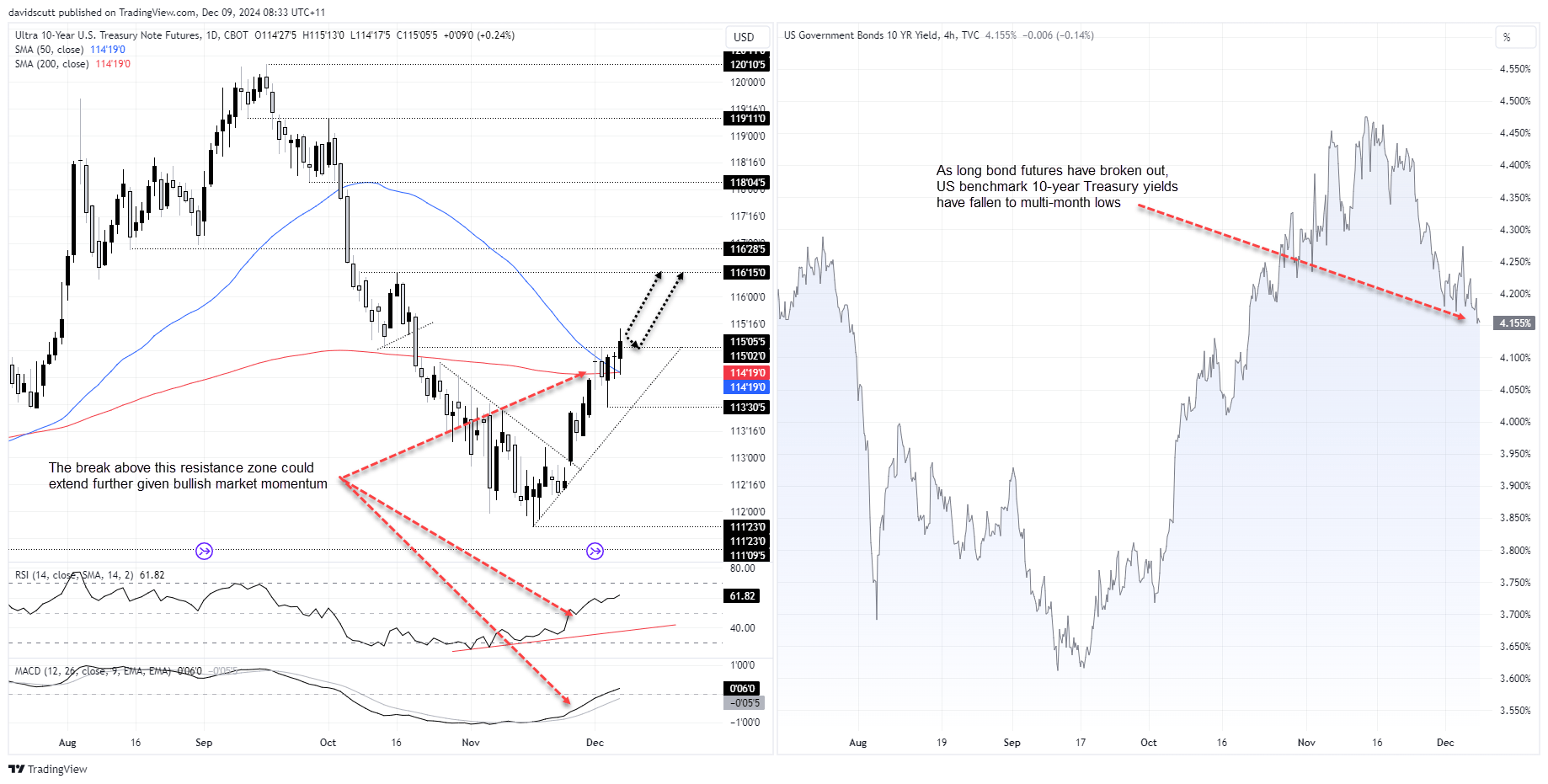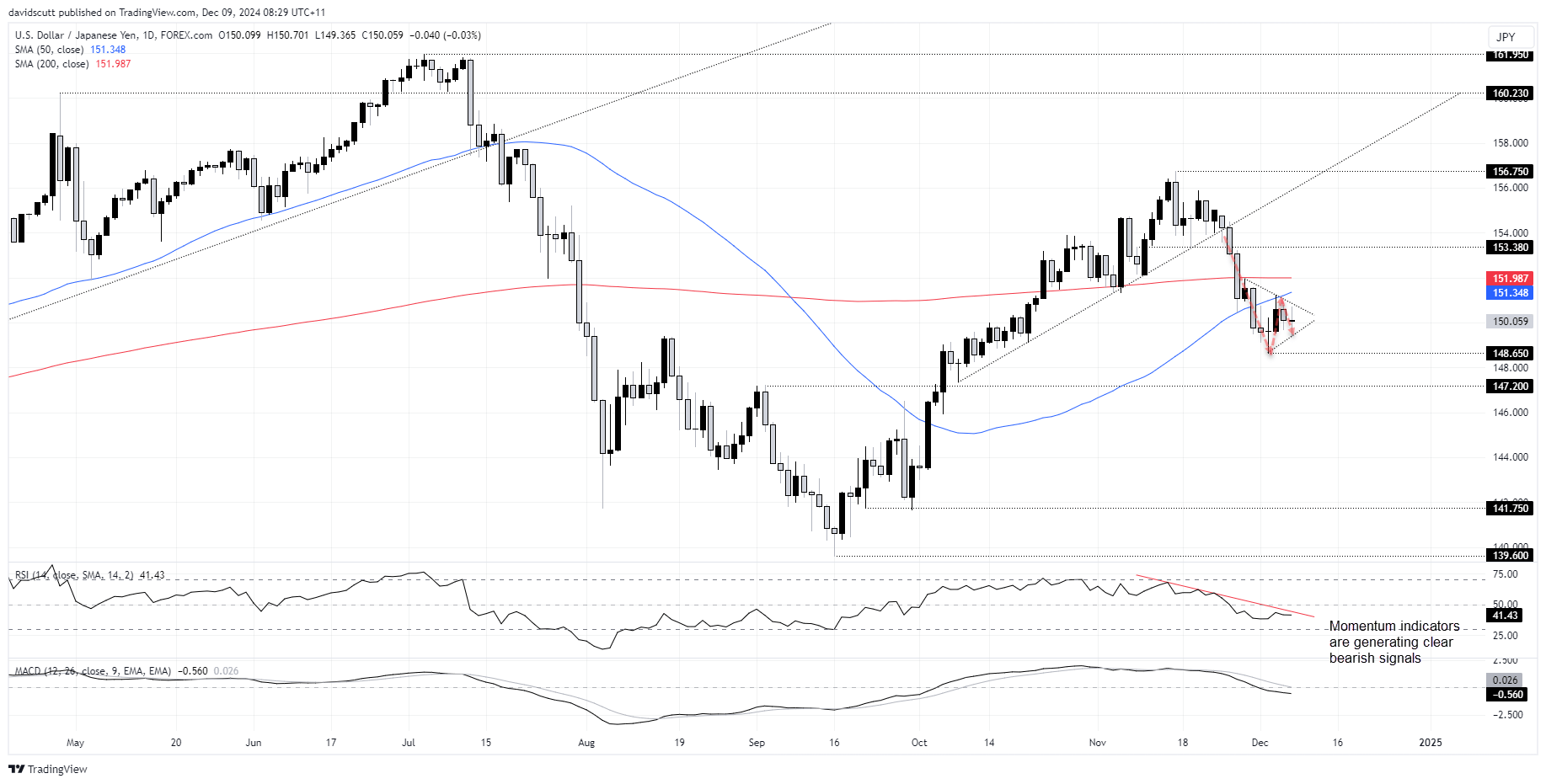- USD/JPY tightly linked to US 5 and 10-year yields, with correlations near 0.95.
- US CPI report on Wednesday looms as the key event, with potential to jolt Fed rate expectations
- Technical signals suggest USD/JPY is coiling for a breakout, with bearish momentum building
- Key levels: support at 148.65 and resistance at the 50 and 200DMAs
Overview
USD/JPY remains tightly tethered to movements in longer-dated US Treasury yields, with the pair's recent action reflecting a nearly perfect correlation to five- and ten-year yields. This underscores how US growth and inflation expectations, rather than Fed rate speculation, are driving the price action. With key US inflation data due this week, the market's focus will sharpen on what it signals for the Fed's policy path which is important for the growth and inflation outlook. Meanwhile, technical signals suggest USD/JPY could be primed for a decisive break, with downside risks gathering momentum amid a narrowing trading range and bearish signals from key momentum indicators.
USD/JPY remains tied to US bond yields

Source: TradingView
USD/JPY continues to be highly influenced by moves in the belly and back end of the US Treasury curve with the roiling daily correlation with US five and 10-year yields sitting at 0.95 and 0.94 respectively over the past month. That’s an extremely strong relationship, indicting it's more the US growth and inflation outlook, rather than the Fed rate expectations which tends to dominate movements in shorter-dated yields, that’s driving USD/JPY right now.
As has been the case for a while, its relationship with Japanese interest rates remains negligible, meaning it's changes in the US interest rate environment that remain far more relevant for traders.

Evaluating upcoming event risk
Regarding the near-term US interest rate outlook, only two events stand out this week as being potential market movers: the November consumer and producer price inflation reports released on Wednesday and Thursday respectively.

Source: TradingView
CPI carries the greatest potential to generate volatility, although with markets 85% priced for another 25bps rate cut from the Fed next week, it would likely take an across-the-board upside surprise for the core reading to meaningfully shift expectations that look for at least two more rate cuts with a strong risk of a third by the end of 2025.
PPI looms as being slightly secondary in relevance this week, especially as it arrives after the CPI update. However, it will contain building blocks for the Fed’s preferred underlying inflation measure – the core PCE deflator – so cannot be ignored.

Source: Bloomberg
The data and Fed watchers in the media will be left to influence market pricing post the releases with Fed members now in a blackout period before the FOMC interest rate decision next Wednesday. The Japanese calendar is also quiet, although keep an eye on its producer price inflation report released on Wednesday for clues on how upstream price pressures are faring ahead of the BoJ’s interest rate decision late next week.
US long bond breakout bearish USD/JPY
Turning from fundamentals to technicals to evaluate directional risks for longer-dated US Treasury yields and USD/JPY moving forward, it’s noteworthy US 10-year Treasury note futures broke through an important zone following Friday’s payrolls report, lifting above the 50 and 200-day moving averages and horizontal resistance at 115’05’5.

Source: TradingView
With RSI (14) and MACD generating bullish momentum signals and little in the way of known resistance overhead, there appears to be room for the run to extend further this week. If the price can hold above the former resistance zone, it points to near-term downside risks for benchmark 10-year yields and USD/JPY.
USD/JPY coiling as bearish momentum builds
Despite US five and 10-year yields hitting multi-month lows on Friday, USD/JPY continues to hold comfortably above the lows it set in early December, opening the trading week just above 150. As has been the case in recent weeks, with momentum indicators like MACD and RSI (14) generating bearish signals, the bias remains to sell rips and bearish breaks.

Source: TradingView
One noticeable thing about USD/JPY recently has been the narrowing range seen over the past fortnight, with the price coiling up in what may be a symmetrical triangle pattern. Given the direction of entry and bearish momentum signals, a downside break comes across as the more likely outcome this week.
A break of triangle support could see a run towards the December 3 low of 148.65. If it were to buckle, 147.20 may act as a magnet for bears. On the topside, a break of triangle resistance may bring a retest of the 50 and 200-day moving averages into play.
-- Written by David Scutt
Follow David on Twitter @scutty